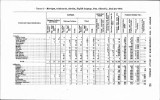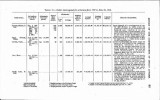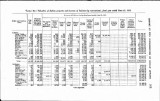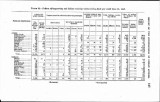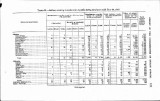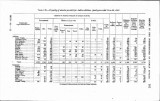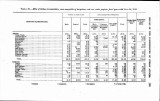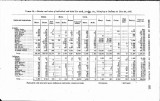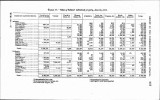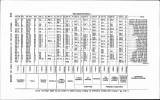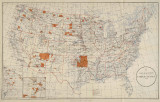| OCR Text |
Show The timber on the reservation consists of about 1,750,000,000 feet of pine, heblock, and hardwoods, of which approximately 40,000,000 feet are cut annually, a basis which is calculated to insure a perpet-ual source of income for the Indiana employed. In and about the mills, yards, camps, and railway are many Indim, some in skilled positions-the greater part in unskilled-all learning the value of daily employment and making social and economic progress. During the fiscal year just passed, an average of 322 Indians have been employed at an average wage of $29.70 per month. Of this number, 271 were Menominees, an increase of 23 per cent over the number of Menominee Indians employed during the previous Gscal year. The able-bodied males of 18 years of age and over of the Menominee tribe number 408. The deputy supervisor of forests who was recently assigned to this project has experimented in the renewal of forests by reforesting burned-over districts and establishing a nursery. Forest damage on ' this reservation has been reduced to a minimum through careful patrol of the forest and the installation of a telephone system and the erection of lookout towers. IRRIGATION. At the beginning of the Gscal year 1913 the office of the chief engineer was removed from Los Angeles, Cal., to Washington, D. C. The irrigation force consists of. the chief inspector of irrigation, an assistant inspector of irrigatLon, who reports directly to the chief engineer, and six superintendents bf irrigation at the head of as many districts, whose offices are convenient to the principal irrigation projects now under construction. The legal right to the use of water is of primary importance in the work of the irrigation branch of the Indian Service. The water right for Indian lands rests upon common-law riparian rights in some cases, and in others it would appear that beneficial use of water must be made before title can be acquired. Theunited States Supreme Court has decided in the case of Winters u. The United States'(207 U. S., 564) that prior appropriation by the United States and bene-ficial use by the Indians is not necessary, because of an implied reser-vation of water with and at the time of the reservation of the land sufficient for the irrigation thereof. However, the land in question had not been allotted, and the case did not involve the rights of any individual Indian but settled the right of the United States on behalf of unallotted Indians. There is urgent necessity for looking thoroughly into all conditions pertaining to water rights on the various resenrations and to protect ," the Indians against the loss of such rights. !2l7161+2 |






























































